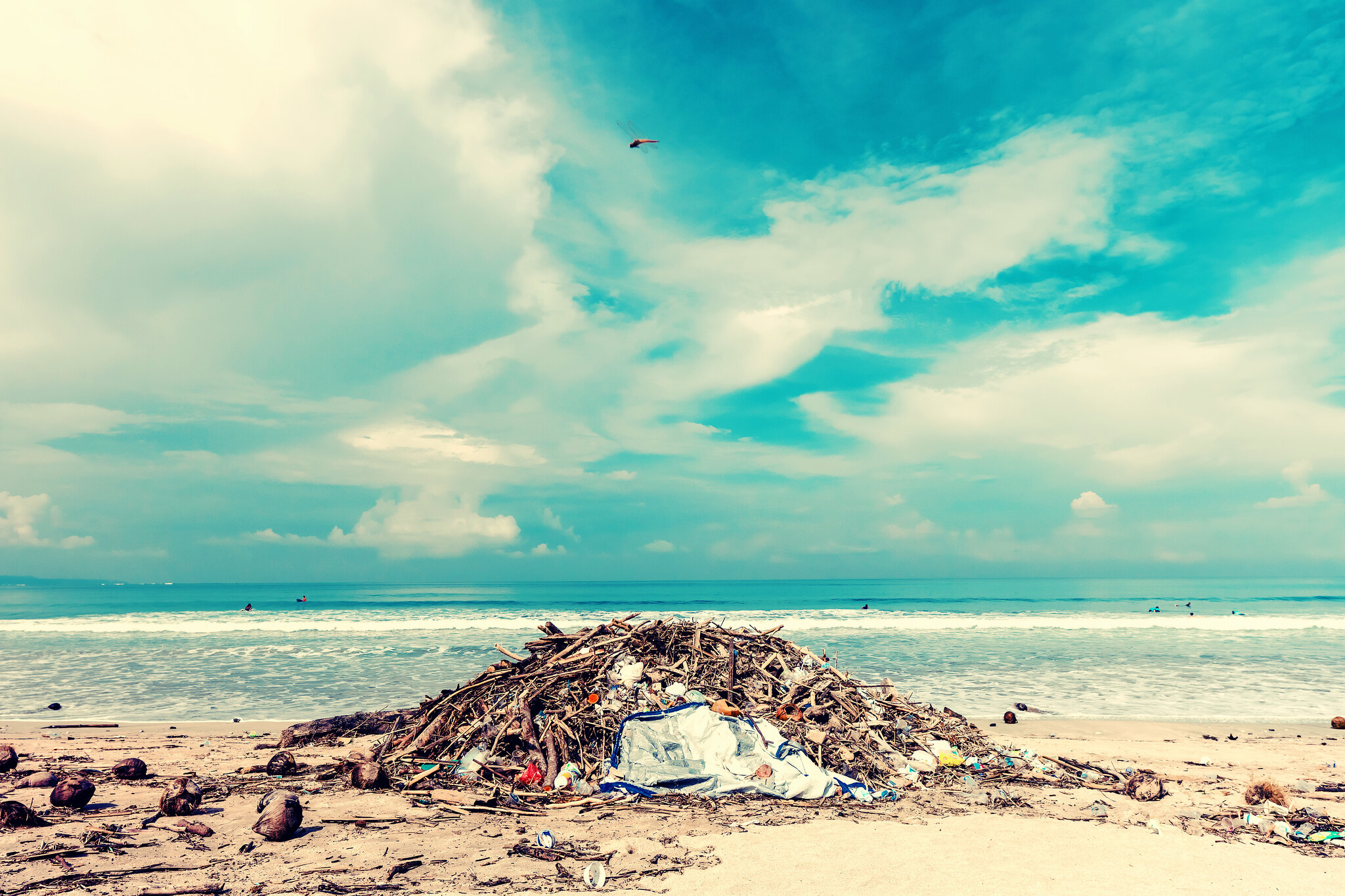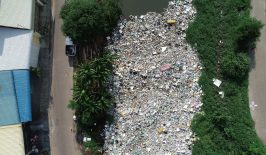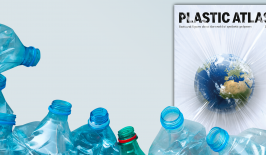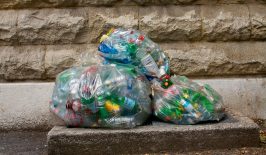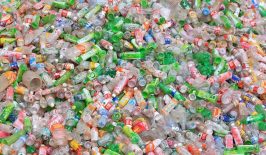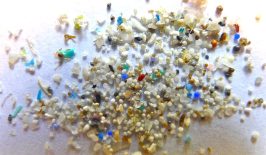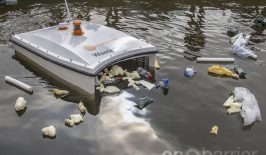We can reduce the amount of plastic polluting our environment by around 80 percent by 2040 – but only if we take drastic steps, on an international level, both in the way we use plastics and in how we process and recycle them. This is the conclusion of a study carried out by an international team led by Winnie Lau of the Pew Charitable Trusts, an NGO dedicated to environmental protection and conservation, together with scientists from several different research institutes.
The Steps We Need to Take to Stop the Plastic Flood
Our ever-increasing production and use of plastic is a problem that’s becoming more and more obvious. Every year, around eight million tonnes of macroplastics end up in our oceans, along with 1.5 million tonnes of microplastics. It is now almost impossible to find places on earth where traces of plastics can’t be found. Plastics have been detected in the most remote polar regions, the highest mountains, in all regions and depths of the oceans, in the stomachs and muscle tissue of animals, in organs of the human body, and even floating in the air. And there’s more: plastics don’t only cause a waste problem – producing, collecting and disposing of plastics (which are all made from oil or natural gas) also has a huge carbon footprint.
The consequences for humans, animals and the environment could be devastating and it is high time for us to act. As Prof. Dr. Rita Triebskorn from the Institute of Evolution and Ecology at the Eberhard Karls University in Tübingen explains:
“Although science cannot at present say exactly which plastic, in which shape or size, could have an impact on the environment or human health, the precautionary principle applies here. No waste belongs in the environment and therefore we should do everything we can to prevent waste from entering it.”
How can we tackle a problem of this size? In order to find answers to this question, the international team developed five scenarios as part of the study “Evaluating scenarios toward zero plastic pollution” and examined them to see which interventions in the plastic cycle are most effective at preventing the plastic from ending up in the environment: Business-as-usual, ‘collection and disposal’, recycling, reducing the amount of plastic and using all these interventions simultaneously. The result is not surprising as the same applies to many of the man-made and highly complex problems that we face – such as climate change – and there is no single solution to solve the problem. What is needed – and this also applies to climate change – is complete system change.
According to the authors, this means that we will only ever be able to reduce the amount of plastic waste in the environment by 78 percent (compared to the business-as-usual scenario) if we jointly and strategically implement all possible plastic-reduction measures at the same time. These measures include increasing the reuse of plastics, improving waste collection and recycling rates, further expanding safe plastic disposal systems, reducing plastic production and consumption, replacing plastic with paper and compostable materials, and reducing the export of plastic waste.
The team also worked out that the “system change” scenario would actually be cheaper too. System changes were predicted to incur 18 percent lower costs than the business-as-usual scenario – with the increased costs incurred for waste disposal offset by cost savings from reduced plastic production and revenue from the sale of recycled materials.
Several individual countries have taken positive steps to cut down on plastics. The authors of the study found that many countries have now banned certain plastic products, with a particular focus on banning disposable carrier bags and microplastics in cosmetic products. The EU has also recently adopted a directive banning one-use plastics. At the same time, many scientific communities and non-governmental organisations are working on solutions. Unfortunately, however, we’re still a long way away from developing a decisive global action plan to tackle plastic pollution.
So, What’s Stopping Us?
First up, collecting the plastic waste from every household in the world would be a huge task. According to the authors’ calculations, over a million additional households would have to be connected to waste collection services every single week until 2040. The majority of the households that are currently not connected to waste collection services are located in middle and low income countries. Efforts to increase the collection of household waste would therefore require “waste collectors” (like these innovative services in Nigeria and in Beirut) to take on a key role, serving as the link between the informal collection sector and formal recycling services in those countries.
It is also important to create new waste management services, as many communities with inadequate infrastructure burn their waste in residential areas or in open landfills without emission controls. This is exacerbated by the fact that high-income countries continue to ship their plastic waste to low-income countries. These exports often further increase the proportion of poorly managed plastic waste, as recipient countries often do not even have sufficient capacity to manage their own waste, let alone more waste sent over from other countries.
At the same time, there are also still lots of gaps in the data, making it difficult to develop effective anti-waste policies. We therefore need more empirical data on the entire plastics system – especially in countries of the global South. The authors of the study have not considered the development of new technologies such as artificial intelligence in combination with remote sensing by satellites and drones, which could give a massive boost to our understanding of the quantities and location of plastic waste in the environment.
Prof. Dr. Sina Leipold, Assistant Professor for Social Transformation and Environmental Services at the Albert-Ludwigs-University of Freiburg, has considerable concerns about the feasibility of the best-case scenario:
“Since plastic production and consumption today takes place in global supply chains, the assumptions regarding the effectiveness and feasibility of policy instruments appear very optimistic.”
This is exacerbated by the fact that urgency is required. According to as marine ecologist Dr. Melanie Bergmann of the Alfred Wegener Institute for Polar and Marine Research (AWI) in Bremerhaven:
“If the far-reaching changes of the ‘system change’ scenario are delayed by just five years, the result will be 300 million tonnes more plastic ending up in the environment.”
And even if we succeed in actually managing this Herculean task, plastics production and unsound waste management activities will continue to emit large amounts of greenhouse gases even if the system is changed. It is also clear that “even with the very ambitious ‘system change’ target that is required, 22 percent will still end up in our environment, which is not a small amount,” says Dr. Melanie Bergmann.
Companies also have a significant role to play, something which is emphasised in the Plastic Atlas from the Heinrich Böll Foundation, which was published last year: While we as consumers of course have a role to play in our society’s excessive plastic consumption (key phrase here, “throwaway mentality”), really far-reaching changes can only be achieved if international companies are held accountable. Only a few dozen companies manufacture the majority of the plastic products in the world and only a handful of multinational corporations dominate the market for plastic pellets, the raw form of plastics.
And these companies have a strong lobby that is well organised to ensure that the growing production of plastics is not seen as a problem. Instead, they focus on waste management and recycling, thus shirking responsibility.
As a result, there are a large number of corporate agreements and initiatives that aim to reduce plastic waste. But almost all of them focus only on waste disposal and leave the manufacturers free from any responsibiliy. We need binding regulations to be put in place that force manufacturers to reduce production or develop more recyclable products.
So there is no way around it – what we need to do is intensively promote further innovations in resource-efficient and low-emission business models, reuse and refill systems, sustainable alternative materials and plastic waste disposal technologies. And for this we need effective policies, more investment in infrastructure for innovation and also more investment in alternative plastics. We need significant commitments to be made by companies, governments and the international community if we’re ever going to achieve, or even work towards, a zero-plastic future.
This is a translation of an original article by Sarah-Indra Jungblut that first appeared on RESET’s German-language site.
